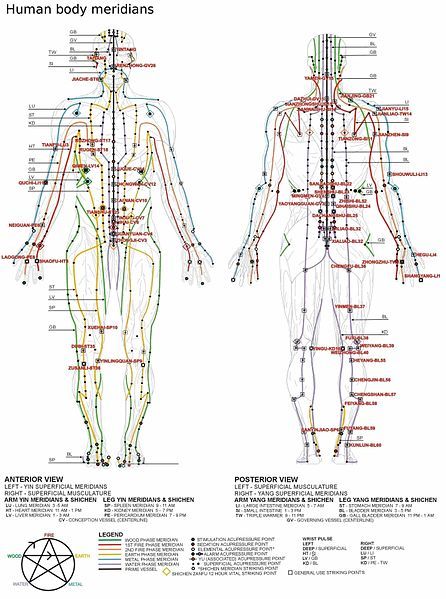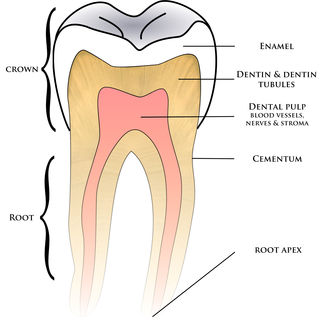This article is written for EvolvingWellness.com by guest author Dawn Ewing, Executive Director of the International Academy of Biological Dentistry and Medicine.
When you have a toothache, you want the pain to stop. But before you let your dentist embalm your tooth – and as you’ll see, that’s what root canal treatment is – you should know how this common procedure may actually damage your overall health.
Why a Dentist Might Recommend a Root Canal
As decay progresses and infiltrates the innermost tooth layer, the pulp, your infected tooth enters a dying phase. If the infection finds an outlet – say, an open area of decay – you might not experience the severe pain associated with a brewing abscess. But just because you don’t have pain, doesn’t mean there isn’t a problem.
Pain and discomfort are not, by themselves, reason to assume you have a dying tooth. So what is?
- Deep decay that’s breached the pulp chamber.
- Trauma to the teeth, such as a blow that moves them out of position.
- X-ray evidence of an abscess.
When one or more of those occurs, root canal therapy is the usual solution offered. And for many, the treatment may let them keep the now lifeless tooth in their mouth for years. Yet as biological dentists understand, root canal teeth are problematic.
To understand why, we need to cover a bit of tooth anatomy.
A Look Inside a Tooth
Your tooth has three components that work to protect your tooth’s pulp chamber:
Enamel – the outer coating of your teeth and the strongest tissue in your body.
Dentin – the layer just beneath the enamel, which is less strong and can be sensitive if exposed.
Cementum – a thin layer of bonelike material that covers the roots and supports the teeth in their sockets.
Image attribution: w:user:Time3000 and w:user:Ian Furst
The pulp chamber, smack dab in the center of the tooth, houses the living blood supply and nerves. Also packed into the chamber are lateral accessory canals that run from the main chamber through the cementum.
There’s also an astonishing network of microscopic tubules that supply nutrients to the dentin. These micro-tubules move fluids outward from the pulp. It’s estimated that if unwrapped, the micro-tubules would measure about three miles in length.
When you have a root canal procedure, all the soft, living tissue of the pulp is removed so the the chamber and root(s) can be filled. But those miles of micro-tubules? Impossible to fill! Because these tubules exchange fluid, bacteria from infected teeth can lodge in them where they continue to grow, multiply, and mutate to accommodate a changed environment. As they do, they produce toxic chemicals that may prove harmful systematically.
Root Canals Have Systemic Effects
The potential danger of root canals was discovered in 1905 by Dr. Weston Price, dentist and Director for the Research Institute of the National Dental Association.
One of his research projects involved implanting root canal teeth into rabbits and observing the reactions. A very few showed no evidence of injury or illness, but in most, the implanted area became inflamed or surrounded by pus. The majority of these rabbits died within 10 days. But others developed a thick, fibrous capsule around the teeth and lived for up to a year. Many of these went on to develop degenerative diseases, notably of the heart and kidneys.
In all subjects, Price documented the changes in blood chemistry induced by root canals. He found that the disturbances of the normal levels of the chemicals of the blood were part of the general condition of root canaled teeth. He wrote,
When these conditions exist for an extended period, they tend definitely to contribute to the degenerative diseases, though they may exist as disturbances and measurable changes in the blood stream for months or years before the clinical symptoms become manifest.
For a further explanation of research and root canal risks, read Root Canals: The Good, The Bad, The Ugly
Holistic Consequences of Root Canals
The root canal issue can also be appreciated by looking to the meridians, the energy pathways on which acupuncture is based. Many organs and systems – including each of your teeth – exist on a single, shared meridian. When a tooth is dead, the energy on the meridian is blocked. This blockage prevents the free-flow of energy to all the organs on that meridian.

The consequences, according to Dr. Thomas Rau of the Paracelsus Clinic (a cancer clinic since 1958), concurs with Price’s findings. Rau did research involving 150 women with breast cancer and found that 147 (98%) had a root canal on a tooth related to the breast meridian.
This merely confirms Price’s research, which is still the most profound scientific work done on root canals to date. Both bodies of work demonstrate teeth with root canals can not only contribute to serious disease, for some, they may be the trigger that leaves a body unable to respond.
About the Author
Dawn Ewing is the Executive Director of the International Academy of Biological Dentistry and Medicine, a professional organization of dentists, physicians, and allied practitioners committed to caring for the whole person – body, mind, spirit and mouth. She is also a naturopathic doctor in Houston, Texas, and author of Let the Tooth Be Known, a book to help consumers make wise dental choices in support of their whole body health and well-being.
Further Reading on Root Canal Risks
Root Canal Issues by the Advanced Health Research Institute
Why You Should Avoid Root Canals by Dr. Joseph Mercola
Why and How to Say No to an Unnecessary Root Canal Procedure by Dr. Lina Garcia

